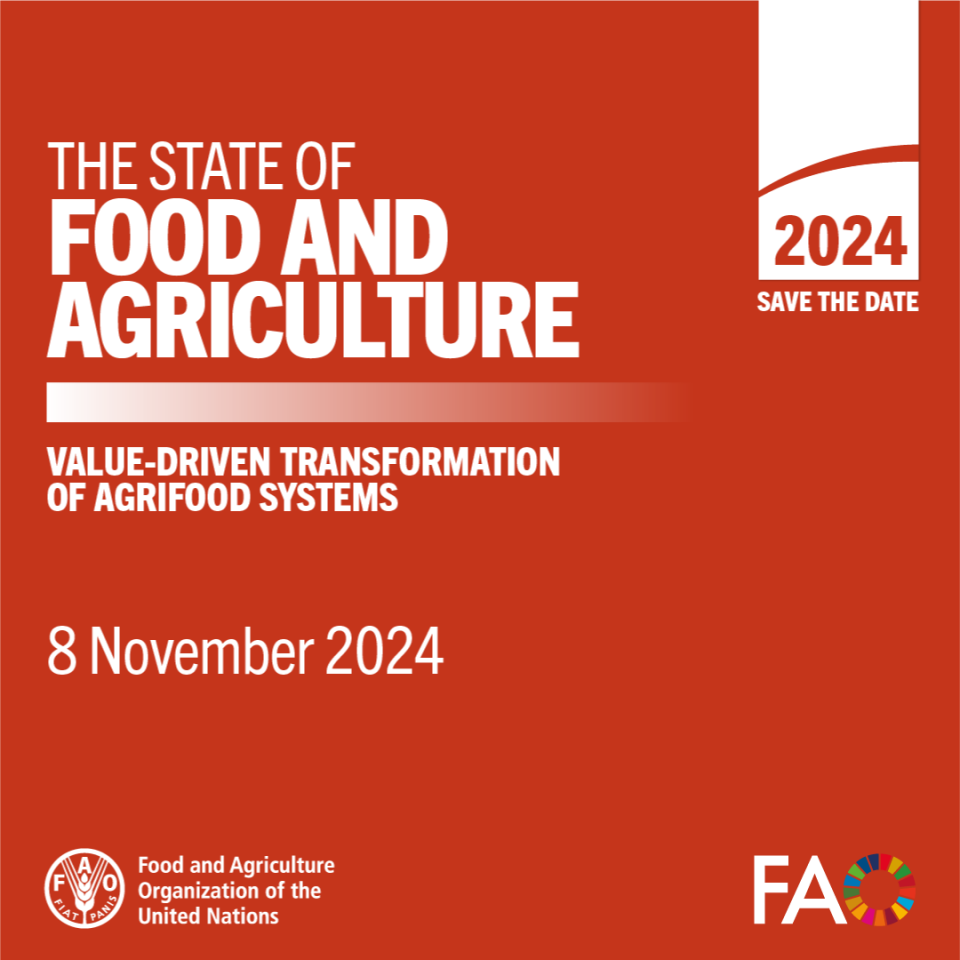State of Food and Agriculture (SOFA) 2024 (GS Paper 3, Poverty & Hunger)

Context:
- The Food and Agriculture Organization (FAO) of the United Nations has released its flagship report, The State of Food and Agriculture 2024 (SOFA 2024).
- This annual report provides an in-depth analysis of key global issues affecting food and agriculture systems, with a special focus on the true cost of food.
- SOFA 2024 builds upon findings from previous years and emphasizes the need for agrifood systems that are more inclusive, resilient, and sustainable.
- It also introduces the concept of true cost accounting to assess the economic, social, and environmental impacts of food production and consumption.
Key Findings of SOFA 2024:
True Cost Accounting:
- SOFA 2024 emphasizes the importance of true cost accounting in understanding the real impact of agrifood systems.
- True cost accounting reveals hidden costs and benefits in the food system, such as environmental degradation, health impacts, and social inequalities.
Global Hidden Costs:
- The total hidden costs of agrifood systems worldwide amount to $12 trillion annually.
- These hidden costs primarily arise from unhealthy dietary patterns, which contribute to diseases and reduced labor productivity.
- India’s hidden costs stand as the third largest globally, following China and the United States.
- India’s hidden costs are estimated to be around $1.3 trillion annually, highlighting the severe economic impact of current food systems.
Health-Related Hidden Costs:
- A significant portion of hidden costs comes from health-related issues, particularly the productivity losses associated with dietary-related diseases.
- These costs alone are estimated at $846 billion annually, underscoring the burden of poor diets on public health systems and workforce productivity.
Dietary Risks and Non-Communicable Diseases (NCDs):
- Unhealthy diets are a primary driver of hidden costs, accounting for approximately 70% of the total global hidden costs—about $8.1 trillion.
- The report stresses the strong link between dietary risks (such as high consumption of processed foods and sugars) and the growing prevalence of non-communicable diseases (NCDs) like obesity, diabetes, and heart disease.
- This trend underlines the need for healthier food environments and dietary habits globally.
Economic, Social, and Environmental Impacts:
While agrifood systems provide significant economic and social benefits, they also generate considerable negative externalities:
- Market and policy failures lead to economic losses.
- Environmental degradation, such as greenhouse gas emissions and nitrogen runoff, exacerbates the environmental costs of food production.
- Social inequities, including poor working conditions in agricultural sectors, contribute to the hidden costs.
Global Scenarios and Case Studies:
- The FAO report presents global scenarios and case studies to explore potential pathways for transforming agrifood systems.
- These case studies illustrate different approaches to creating more sustainable and equitable food systems, providing practical insights into achieving these outcomes.
Key Recommendations for Policy Transformation:
Promoting Healthier Diets:
- Encourage the consumption of whole grains, fruits, vegetables, and beneficial fats, while reducing the intake of processed foods and sugars.
- Healthier diets can significantly reduce the health-related hidden costs associated with diet-related diseases.
Sustainable Agricultural Practices:
- Implement sustainable farming techniques to reduce the environmental impact of food production.
- Practices such as reducing greenhouse gas emissions and minimizing nitrogen runoff can help lower the environmental hidden costs.
Improving Social Equity:
- Focus on improving the working conditions and wages of agricultural workers.
- Addressing socio-economic disparities within agrifood systems can reduce the social hidden costs and promote a more equitable food system.
- There is also a need for policies that incentivize sustainable practices and strengthen institutional capacities to support the transformation of agrifood systems.
Engagement and Stakeholder Collaboration:
- Policymakers should engage multiple stakeholders (governments, businesses, civil society, and consumers) to foster collaboration in the agrifood transformation process.
- A shift in consumer behavior and the equitable involvement of producers in the food supply chain are essential for building inclusive and resilient agrifood systems.
Conclusion:
- The FAO's State of Food and Agriculture 2024 report reveals that the hidden costs of food systems, particularly in countries like India, are staggering and demand urgent action.
- India’s $1.3 trillion in hidden costs presents a significant challenge but also an opportunity for reform.
- By promoting healthier diets, adopting sustainable agricultural practices, and improving social equity within the agrifood sector, countries like India can significantly reduce these hidden costs and work toward a healthier, more sustainable future.
- The true cost accounting framework offers policymakers a powerful tool to better understand the full impact of food systems on society and the environment, enabling more informed decision-making and the creation of policies that prioritize long-term sustainability over short-term gains.


